I'm going to use an exemple to ask my question, lets suppose we have a function G composed of 3 functions f1, f2 and f3, like this picture :  the function
the function G = f3(f2(f1(input))) or g = f3 º f2 º f1
an other example when G is composed of 4 functions like so :  where f1 and f2 are not necessarily parallel, how can we write G?
where f1 and f2 are not necessarily parallel, how can we write G?
Asked
Active
Viewed 99 times
0
Balkis
- 103
- 7
-
in second example f2 does not have input, can it be simplified to constant argument to f3? – Nazarii Bardiuk Sep 14 '16 at 10:33
-
I forgot to draw it , it does have an input, i have edited the question – Balkis Sep 14 '16 at 10:39
-
3in the first image the arrow from f1 to f2 is easy, but why are there 2 arrows from f2 to f3? If in the first picture f1 takes as argument **input** and serves itselfe as input for f2 which serves as input for f3, you cold write your function g in image #2 as: `G = f4(f3(f1(input, f2(input))))` – Radinator Sep 14 '16 at 10:49
-
3How do you define "not necessarily parallel" in mathematical terms? Ignoring this constraint I would write: G = f4 º f3 º (f1 x f2) – Peter G. Sep 14 '16 at 10:49
-
1@Radinator the 2 arrows means the output is a tuple or in this case a couple – Balkis Sep 14 '16 at 10:52
-
Okay @PeterG., exactly i'm not sure how, if they where parallel i think it should be like this : G = f4 º f3 º (f1 , f2), not parallel i suppose like you suggested – Balkis Sep 14 '16 at 10:54
1 Answers
2
You will want to have a look at arrows. With them, your functions could be expressed as follows:
G1 = f1 >>> f2 >>> f3
G2 = (f1 *** f2) >>> f3 >>> f4
Notice that there is no difference between one and two lines between two function blocks - two arguments is equivalent to one tuple argument. It only will matter if the lines point to different blocks.
Bergi
- 630,263
- 148
- 957
- 1,375